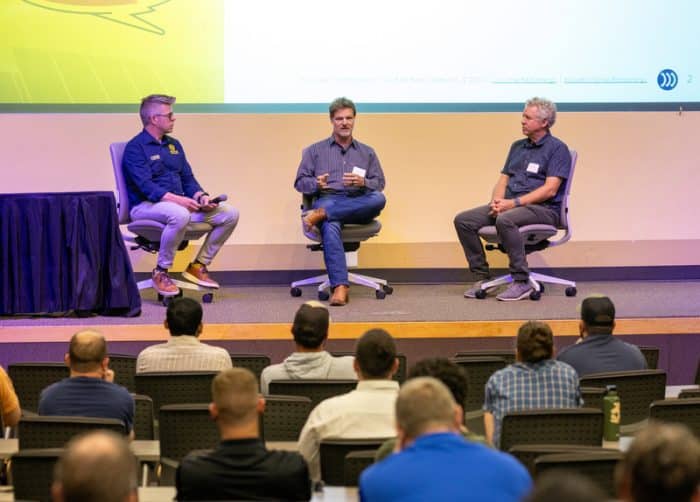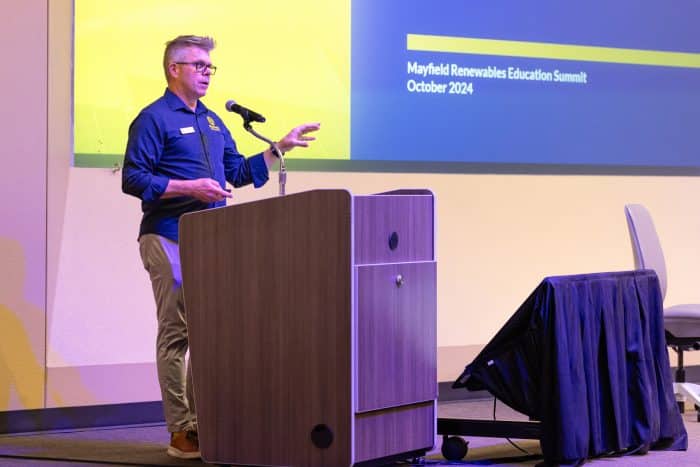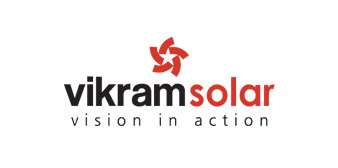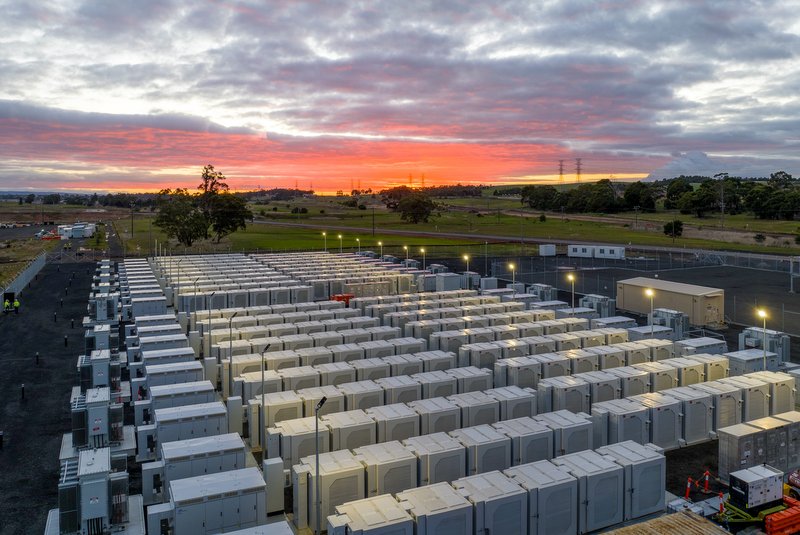Four takeaways from the Mayfield Renewables Education Summit

The Mayfield Renewables Education Summit, Oct. 2-3, in Austin, Texas, was as advertised: A no frills, in-person learning and networking event for solar professionals. There were a few suppliers with tables in the common area, but the Summit had nothing to sell except engineering expertise and a deeper understanding of codes and standards.
That’s not to diminish the down time in between classes. On the contrary! Due to the content, classroom setting, and quality of attendee, even the passing chit chat revealed best practices and lessons learned.
The curriculum at the Summit was heavy on codes and standards, with an extra focus on mid-market / microgrid projects. My brain isn’t big enough to hold the fire hose of information that came my way, but here are some droplets I can share.
1. UL 9540 pushback
Energy storage system (ESS) fire codes and standards are the major area of focus and scrutiny in the industry, specifically UL 9540 and 9540A. This was the hottest topic at the Summit: A growing number of AHJs are pushing back on UL 9540. Here is that story in much more detail.
2. Value of solar that works?

Tim Harvey with Austin Energy and Stan Pipkin of Lighthouse Solar kicked things off on the first night, discussing the utility / contractor relationship — and it was a refreshingly cordial discussion, thanks to Austin Energy’s genuine interest for installing solar.
Key from Harvey’s POV is Austin Energy’s “Value of Solar,” which is based on their avoided costs rather than net energy metering (NEM). When that “value of solar” terminology is used by utilities, it often means they are about to drastically devalue customer payback for their PV production and infuriate the solar industry.
Pipkin said that Austin Energy’s model works for his business and customers. I followed up with him after the event to understand a bit more …
“Simply said, the VoS is a calculated rate that equals the utility’s cost neutral value of solar energy equal to the cost of energy delivered by traditional means to the same place and at the same time. It is calculated using a transparent methodology that considers the locational cost, time cost, congestion cost and environmental cost of delivering the equivalent energy to your site.
“The alternative for Austin Energy is to buy power from the ERCOT market that could be produced by any number of generators (fossil fuel, wind, etc.), transmitted across great distances and competing with all the other demands on the grid at that moment. Solar solves each of these very elegantly. Solar is produced during the day, is clean and travels from your roof to your fridge without going anywhere else.
“How Austin Energy then bills the consumer takes a little unpacking. The first thing to know is AE decouples your consumption of energy and your production of solar energy. What it takes to run your building will look like your total consumption. Add up all the loads, how long they run, and you will get your total consumption. If you have solar on the roof, some of the loads will be powered by solar (during the day) and some will be served by the grid. This is just a fact of how the electricity likes to flow.
“AE will meter (track) the power from your solar system and track the energy they send to you and do some math to arrive at your total consumption. They bill you on this total and according to the tiered rates they have in place.
“Then — and this is the great thing — AE will credit you at the Value of Solar rate for all of the kWh that is generated from your solar system, regardless of where the electrons go.
“Imagine you are out of town for a month in the summer and your consumption is very low, but your solar production is high. Some of the solar energy will flow to the grid and you will still get the full Value of Solar for that production.”
As for Austin Energy, their Value of Solar model also avoids future arguments about NEM rate changes. “Value of solar allows us to totally recover and stay cost neutral, and so you won’t see us jerking that around,” Harvey says, as utilities are often prone to do with NEM. I found that to be a compelling argument for it.
Right now, rooftop solar owners earn 9.91 cents per kWh. So, not as lucrative as the heyday of retail NEM payback. But the VoS is evaluated every 3 years by looking at the rates in the energy market.
“Based on the real events of the last few years, the rates in the power market have gone up, which will push the VoS up higher in the years to come, which means higher value kWh produced over time,” Pipkin says.
For any utilities interested in the Austin Energy model, Harvey says they are ready to package it up and send their model your way.
3. Solar as a career needs a catalyst

The Summit’s setting at the University at Austin campus set a great tone for the main objective of the event: learning. It was also a good backdrop to probe this question: “Why isn’t solar a more prominent career pathway at most universities?”
The panelists on Oct. 2 each offered their take. The one that stood out most should be obvious to any Millennial with an expensive piece of paper sitting in a box in their closet: $$$.
Solar companies, or a few wealthy solar benefactors, need to be that catalyst for the solar industry on college campuses by hosting events and paying for programs and donating for favors the way fossil fuel companies still do.
After all, “Solar is not just a job anymore,” reminds Shawn O’Brien, president and CEO of NABCEP. And on the workforce training side, O’Brien says NABCEP is making good progress, pointing to 11 states that now have incentives tied to NABCEP certification. He hinted at some other impactful partnerships with training organizations coming soon too.
Thing to think about: How to structure pay scales in a way to help pay for training for your own employees.
Good tip: Tatianna Cannon, executive director with CleanTX, had a good tip for solar companies struggling to find employees. In addition to calling for “aggressive equity” (if you’re not finding motivated employees, you might not be looking in the right places), she encouraged everyone to look for non-profits in their area. There may be organizations near you that can help find motivated employees or collaborate on workforce development.
Great idea: I liked this quote from Pipkin with Lighthouse Solar during the opening session: “We like keeping salespeople involved after the sale so that they have some stake in it to realize that their success comes out of that long-term relationship.” The salespeople are still hustling to sell for sure, but they “stay connected enough to see how their decisions impact teammates.”
4. MLPE options in UL 3741

If you’ve never heard of UL 3741, read up on the basics of UL 3741 here.
The TL;DR is that UL 3741 has been gaining momentum as a pathway to comply with NEC 690 using string inverters without module-level power electronics (MLPE) or rapid shutdown devices. To accomplish this, inverters are tested with racking and wire management and listed together as a PV Hazard Control System (PVHCS), which certifies that the system will not pose a shock hazard risk to fire fighter wearing PPE in the worst-case scenario (falling into an array with a tool and creating a path).
In a UL 3741 design session, Ryan Mayfield, founder of Mayfield Renewables, showed six different design pathways to comply with UL 3741. My big takeaway is that MLPE products are now making their case as UL 3741 options.
Design pathway No. 2, for example, is an array that connects multiple modules in series but stays under 165 V. There hadn’t been a product on the market to serve this, but SolarEdge now has a UL 3741 listed product that can connect two modules in series at 125V. Previously they were connected in parallel to not exceed 80 volts.
“165 Volts is the new 80 volts,” Mayfield says, acknowledging that 80 V wasn’t based on anything more than an awkward compromise that can happen with so many voices in the code-making process.
So, why 165 V? It goes back to the hazard matrix that’s part of the PV Hazard Control System testing under UL 3741. Testing has determined that as long as the voltage between any two conductors can stay below 165 V, the system will not exceed Hazard Level 1 after accounting for a firefighter’s PPE resistance.
- Hazard level 0 is 0 to 2.67 mA
- Hazard Level 1 > 2.67 to 40 mA (insignificant threat to life or injury)
- Hazard Level 2 > 40 to 100
- Hazard Level 3 > 100 mA
To see an example, Mayfield excitedly points to Appendix A in the code book, Fig. 1. Install dc to dc power electronic devices.
This is why / how you see SolarEdge coming back to connecting multiple modules in series. At 125 volts, that shock hazard imposed is low enough that they meet the requirements no matter what the racking is. They couldn’t have done that otherwise.
Pathway No. 5 is another example, with string isolation devices. Tesla’s mid-circuit interrupters are the main example here, but more are becoming available, Mayfield says. Delta is rumored to have one. MidNite Solar developed one for BIPV shingles but are working on getting another listed. Tesla’s MCI is only listed to 600V, and others are trying to get to 1000V.
You can envision microinverter companies also getting certified to UL 3741 just to do it, since they are inherently compliant and require no special racking requirements.
Of course, many installers like UL 3741 as a pathway to remove from MLPE, while some will never be comfortable with higher voltages on a rooftop. String inverters without some kind of mid-circuit interrupter will always be Hazard Level 3, and thus need to be tested with racking and wire management to get certified as a PVHCS to vouch for how unlikely that event is to occur.
Mayfield reminds: “Removing the probability of Hazard Level 3 from happening to be compliant is not eliminating the risk completely,” Mayfield says. “Some people hate this standard and say it missed the mark.”
The bottom line here is that more and more products continue to meet the UL 3741 standard, providing options and design flexibility for any installer preference.





Comments are closed here.